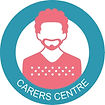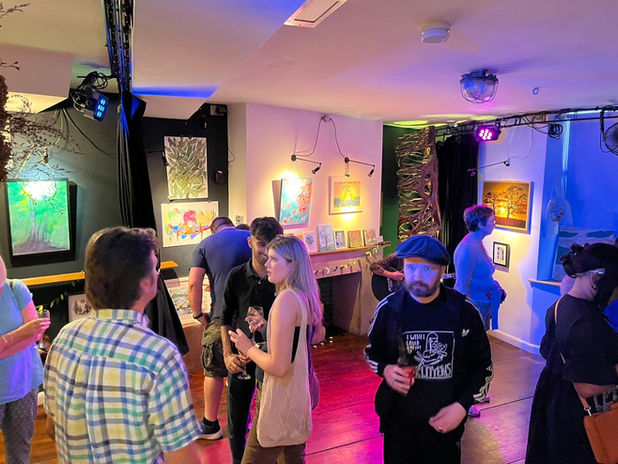DRAW ME A TREE - PROJECT OVERVIEW
How we grew a seed idea into a forest
THE BEGINNING
'Draw Me A Tree' started with just that, four words. Four words that appeared as a fleeting thought but didn't fade away.
I knew that I wanted to create an exhibition relating to trees but how that was going to work, I had no idea. I have always had a deep connection to nature and I wanted to showcase the importance and individuality of trees through art. I wanted to make a difference and encourage the community to think about how we can care for the environment and how in turn, it cares for us mentally and physically.
Initially, we had planned for local artists to submit images to us and perhaps curate some kind of online exhibition. Then it escalated a little...
One of our followers tagged us in an advert for the Portsmouth City Council #BackTheFuture Climate Challenge on the final day of submissions, and with a couple of hours to spare I decided to apply. To my surprise, we found out we were one of five successful applicants and ended up on an unexpected crowdfunding rollercoaster! With the help of friends, family, the community and Portsmouth City Council, we were gratefully able to raise £10,000 to fund our project.

THE PLAN
Learn more about the what we planned to do, how and why
Fun fact:
I designed the tree's in the promo background by hand, using watercolour paints and pencils before digitally turning them into a pattern!


To really feel a forest canopy one must use different senses, and often the most useful one is the sense of imagination.
― Joan Maloof
RESEARCH
The meaning behind the project
Here at Wild City we like to learn, think and grow! Everything we do is backed up by substantial research that inspires and drives our project ideas.
Having grown up in a deprived household and experiencing complex trauma during childhood, including surviving a major house fire and a series of difficult family bereavements, I was forced to grow up emotionally very quickly. It was really hard to find my place in the world or relate to other people in school and beyond, children or adults, because of the things that I experienced at such a young age with little support. I was fortunate however, to be surrounded by nature, and although that felt isolating at times, it provided me with a sense of freedom and home. I learned to understand the benefits of being outside and how it provided comfort from stressful situations. Where I grew up in the middle of the South Downs, you could walk for hours and not see a single person which made city life quite the culture shock!
I thought about the amount of people who go through challenging situations in cities, where mental health difficulties are drastically rising across all age groups, along with poverty, deprivation and many many other issues. How could I put my experiences to good use and make an impact, however small? I researched into the proven scientific benefits of nature and thought that if I could just encourage one person to step outside, recognise their connection to nature and feel a bit better in themselves then that would be a success. The action of empathy in practice.
With this project in particular, I began looking into feelings of insignificance. Everyone experiences self-doubt to some degree, where they feel small, unaccomplished or not good enough. In today's society, it's too easy to compare yourself to others or measure your personal success against the virtual mass of filtered lifestyles. So, how can we turn those feelings of insignificance into a positive?
Let's start by thinking about how we feel when we're surrounded by nature, or just one large tree! When you're immersed by nature, it makes you feel small - not through negativity, but in a reflective, humbling sense. It forces you to recognise that there is more to life than your immediate stresses or the things you're constantly exposed to online. It makes you realise that nature is alive - it goes through cycles and keeps on growing, reaching for sunlight regardless of its surroundings, just like you.
This is the feeling we wanted to create through the Draw Me A Tree initiative. For everyone who enters the final exhibition to feel part of something positive, expansive and magical! The quote below is by Sandra Shapshay, a philosophy professor who's research focuses on environmental aesthetics, especially theories of the sublime. It explains in a bit more depth what we're talking about, and explores the relationship between humans and nature.
"Here we have an account of sublime experience that oscillates between feeling reduced to nothing in comparison with the great spatial and temporal expanse of nature, and then feeling elevated by two thoughts ‘that only philosophy makes clear’. First is the thought that as cognising, thinking subjects we in a sense create (support, construct) our own world – a second nature, as it were – a world of our own subjective experience. And the second exalting thought is that we are in some sense ‘one with the world’, and in being unified with nature in all its temporal and spatial vastness, we are therefore ‘not oppressed but exalted by its immensity.’
The source of the pleasure in sublime experiences derives, according to Kant, from an appreciation of our capacity for moral and theoretical transcendence of mere nature, and, in Schopenhauer, from a reflection on the two-fold nature of our selves. On the one hand, we have power as cognising subjects – we are creators of a world, a world of subjective experience; and on the other hand, the experience reveals in an intuitive fashion that we are at bottom really unified with all of nature. Nature’s immensity is our immensity; its seeming infinity is our infinity too."

THE MIDDLE
Time to get to work! We took a few weeks to really think about and research how to make the most of the funding we received - the goal was to spread our branches to reach as many people as possible.
Our plan was to deliver a series of free creative workshops across Portsmouth city, exploring the green spaces around us and creating art from those experiences. It was particularly important to us to work with people in our community who needed a bit of extra support, that maybe didn't have regular access to nature or lived in deprived areas of the city. This was so we could utilise the crowdfunded money in the most beneficial way possible, engaging and including those who might appreciate it most.
So, we started to contact lots of local community groups, charities and schools. A few replied, a lot didn't. But nevertheless, we were able to organise a schedule of workshops with some incredible groups. We also set up some monthly creative wellbeing walks for members of the public to learn more about the project, get outside and make some drawings for the exhibition.
WORKSHOP EXAMPLES
See what we got up to on our Draw Me A Tree adventures!
OUR COLLABORATORS
For the Draw Me A Tree workshop programme, we organised and led 15 free workshops for a variety of groups across the city. We were incredibly lucky to work with these organisations and take part in so many inspiring conversations. Some workshops were based outside within the green spaces of Portsmouth such as Victoria Park and Hilsea Lines, while others were at their own premises. We did a lot of walking, talking, drawing and even some yoga! We talked about what we like about nature, how being outside makes us feel and what we would look like if we were trees! We used lots of different materials, from collage, pencils and paint and learned how to record our surroundings from direct observation. The important thing about these workshops was the collaboration between nature and creativity. Creativity helps to ground our experiences, to give a new purpose and a sense of pride - particularly for those not used to just 'being' in nature without an objective.
I would like to express a huge thank you to all the groups & charities shown below - thank you for believing in us, enabling us to reach out into the community and bring the project to life in such a rewarding and meaningful way.

THE BIG EVENT


THE FINISHING TOUCHES
Here come the artists!
Once our free workshops were well underway we rolled out an artist call out for local creatives to exhibit work for the exhibition. We were completely overwhelmed with emails of interest and ended up (after a few drop outs!) with a group of 25 artists submit work using the theme of tree's as inspiration.
And now for the building of the forest...
We said we'd make a sensory experience and that we did! I really believe that art is meant to be felt, not just looked at or criticised. We wanted to create a sensory experience that highlighted the magic of nature in partnership with imagination and creativity. Coastguard Studio was the perfect venue to create a maze style woodland feel. Jordan (my husband, the other half of Wild City) had a vision of the interior and brought it to life in the most spectacular way - creating an art installation forest from carpet rolls, offcuts from a local tree surgeon, lots of plants, camo nets and lighting. Pine forest scented diffusers and incense filled the room, with deep percussion sounds, accompanied by live music from the insanely talented local musician Jake Bezzina. We had a make your own station for the tactile element including a finger print tree, create your own wooden bookmark, tiny tree rings and dried flower mandala activity. All this with a free bar and vegan sushi which made up the taste part!

THE SECRET FOREST
THE GALLERY
THE END
WOW - what a whirlwind year! We would like to take this opportunity to thank the 150+ people who attended the event, we are so grateful to everyone who came along and gave such positive feedback.
A big thank you to all artists involved, for putting yourselves out there, showing up and connecting with us. Your work lit up the room and captured the theme in such a diverse and magical way - well done to each and every one of you! On the night I'm proud to say we sold £500 of local artists work with 100% going straight back to the creators. We always want to champion artists and promote the true value of creativity and imagination.
Thank you to James and Zara at Coastguard Studio for accommodating us, being so chilled and letting us completely transform your venue with our crazy ideas.
Thanks again to the charities and groups that invited me in to carry out the workshops - I loved meeting so many new people and listening to your thoughts and stories. Each workshop was so impactful and really grounded the purpose of the whole Draw Me A Tree project.
Thank you to Portsmouth City Council and Crowdfunder for choosing our project to support through funding.
Last but certainly not least, I would also like to express our deep wholehearted gratitude to our family who always support us with everything from childcare, hanging artwork, manual labour, running the bar, being the door host etc. the list goes on! Thank you all - none of this would have been possible without your support.


























































